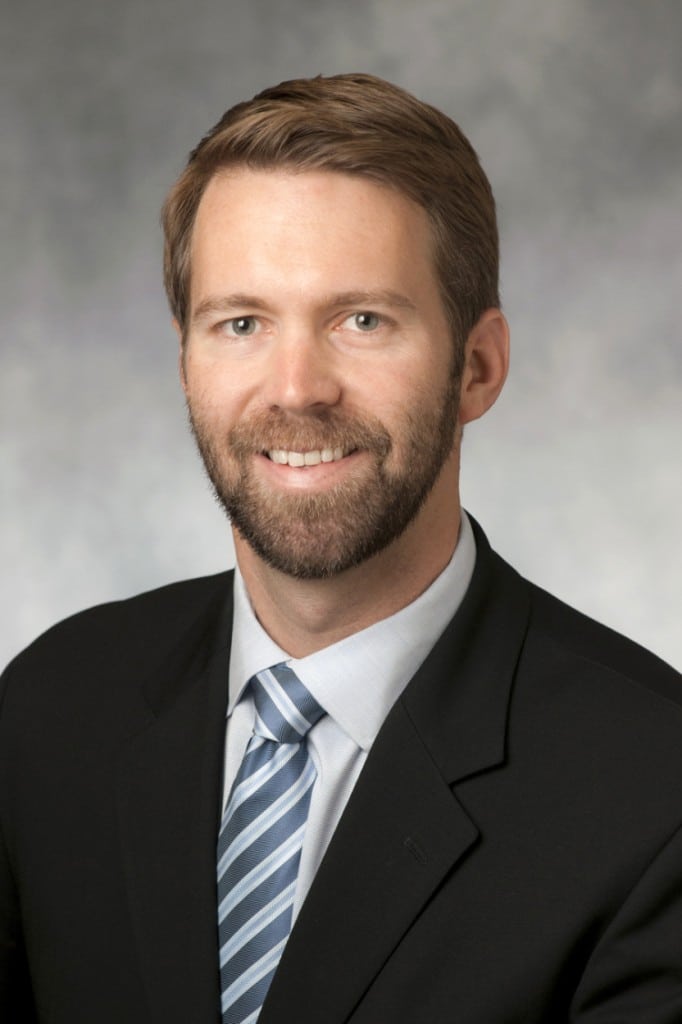
Sundt Senior Vice President and Southwest District Manager Ryan Abbott recently sat down to talk with GlobeSt.com, an industry-leading website dedicated to providing original and timely commercial real estate news. During the interview, Ryan discussed the economy, construction best practices, major university construction projects and other exciting Sundt work going on throughout the Southwest.
GlobeSt.com: Where do you see the most potential growth in Phoenix’s construction economy?
Ryan Abbott: We’re following the demographics toward a greater healthcare infrastructure, biosciences research, diagnostic laboratories, technical education centers, digital record storing and retention. Phoenix has a diverse manufacturing base with emphasis on aerospace and electronics, supported by a growing higher education sector.
GlobeSt.com: You are a firm believer in a multi-disciplinary, collaborative approach in solving society’s biggest challenges. In your experience, have you seen more organizations/cities/schools in Phoenix adopt this approach in construction?
Abbott: Having just stepped beyond the threshold of what has been dubbed The Great Recession, I can tell you that I am truly amazed at the fragmentation that has occurred in the construction marketplace. Just like economic markets tend to travel with inertia – in a self-reinforcing trajectory until something overheats or overcools, then rapidly changes direction – we’re finding the same occurs with our client base, building owners. Given too much predictability, contract terms seem to revert from those that support collaboration to what I’ll call bunker-building or risk-coercing.
The inverse applies, as well. We’ve got some fantastic customers who have said, ‘You know I want long-lasting value, I want a predictable outcome, I want an experience that mimics the culture of my company,’ and throughout the last several years we have created unbelievable value with these customers.
GlobeSt.com: When does collaboration work best?
Abbott: It works best when all parties can put the endeavor first. It takes a customer who has the courage to tell their design and construction professionals what they want and where they’re headed. Collaboration works best when the stakes are high, the challenge grand and the objective transformational.
GlobeSt.com: Sundt has completed and is working on several major university construction projects in Arizona. Is there a trend you’re seeing in university construction?
Abbott: Threaded urban context where each building is supported by and reinforces the next. University construction requires teams to engage in, understand and dynamically respond to the ecology of the project. They have to be durable and long-lasting, and they have to take significant abuse yet remain completely flexible. They have to be easily maintained and industrial, yet be inspirational and inviting. They have to be inviting, yet safe and secure. They have to be adaptive, quickly reacting to large changes in occupants, yet elegantly simple.
A university is often a collection of independent fiefdoms tied together with a chilled water system. They are a decentralized model that requires a centralized vision. Getting to the best project requires diplomacy, understanding, transparency and communication, through every single medium possible. When we work with schools and universities, we work with some of the world’s greatest scientific minds that might be ill-equipped to translate two-dimensional discussions into three-dimensional spaces. We are working with pedagogical advancement that might likely change more quickly than we can build the space to house it. In fact, in some cases the curriculum to be taught in some of our projects hasn’t even been determined when we put the first shovel in the ground.
A modern campus bookstore doesn’t just contain books … it contains tablets and 3D printers and a coffee bar. Some modern classrooms don’t have a front or a back. They are designed to have team modules, where learning occurs side-by-side. It’s not rare to have a classroom technologically linked to another one somewhere else and the students of each collaborating on a project.
We are currently working on several public-private partnership projects where the university provides the land, a private developer provides the funding and then the university pays the developer over time for the use and ultimate ownership of the result. In some cases our team is even operating and maintaining the educational facility, leaving the school to do what it does best: teach. On the construction side of the equation, the buildings we are providing today are more cost-effective to own and operate than ever. We focus on the total cost of ownership in decision-making across the board.
Today it’s about proximity, about attracting creative people and creating the universities that keep them there. It’s no longer good enough to simply have spaces that support pedagogical advancement; modern universities need a world-class fitness center to play in, exceptional multi-family buildings to live in and state-of-the-art facilities to work in. Modern universities are landlords to fantastic restaurants, creators of walkways that connect and amenities that inspire.
GlobeSt.com: What other projects is Sundt working on throughout Arizona and the rest of the Southwest region?
Abbott: We’re building a laboratory and classroom building for what has been coined the ‘Harvard of the Sky,’ a hospital for an organization that is transforming sick-care into health-care, a 10-story biomedical science research building poised to turn first-generation doctors into disease curers, a 57,000-seat football stadium, an international airport, a 911-call center, a skilled nursing center, a cleanroom and an office tower.